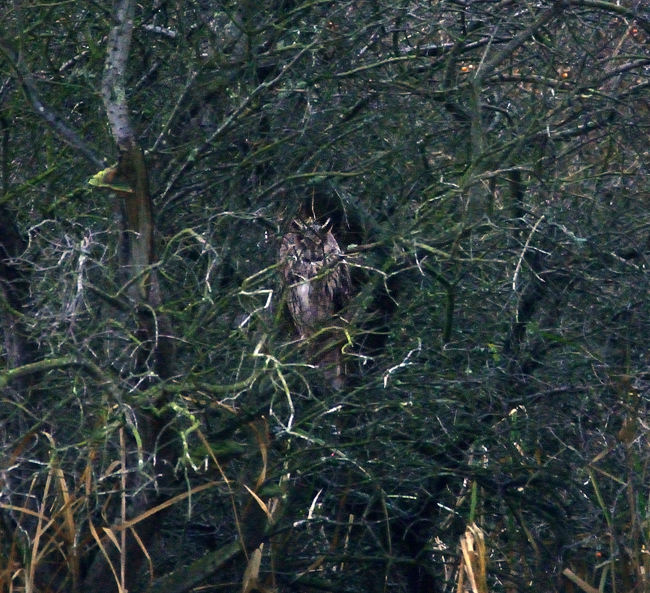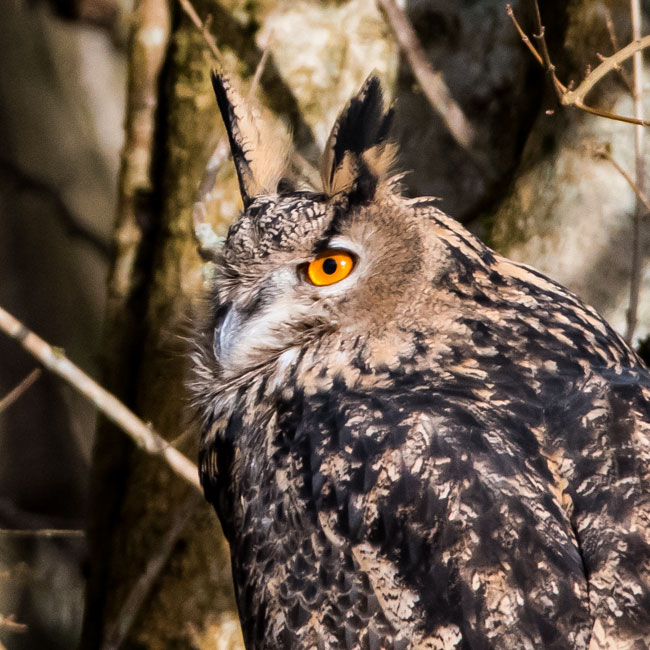
|
Long Eared Owl
|
||
|
Taken at Aberlady
on 11th January 2015 using Nikon D500 with Nikon 18-55 mm lens and
Raynox DCR-250 macro lens
|
 |
|

| Taken at Strathclyde Park on 30th January 2021 using Nikon D500 with Sigma 600 mm zoom lens. See January 2021 Blog |  |

| Long Eared Owl. |
| Species: Order: Family: Local Names: |
Asio otus. Strigiformes. Strigidae. |
| Site Of Nest: Food: Plumage: Length: Wingspan: Breeding Period: Eggs: |
Trees, often coniferous, using the old stick
nests of other birds such as crows, ravens and magpies and various
hawks. Rodents, small mammals, and birds. It has erect blackish ear-tufts, which are positioned in the center of the head. The ear-tufts are used to make the owl appear larger to other owls while perched. The female is larger in size and darker in coloration than the male. The long-eared owl's brownish feathers are vertically streaked. Tarsus and toes are entirely feathered. Eye disks are also characteristic in this species. 31 - 40 cm. 86 - 100 cm. Feb - July. 4 - 6 |
| Voice: |